Australian chef Josh Niland is called the king of scale-to-tail cooking, having revolutionised the best way cooks have a look at aquatic produce together with his insistence that something that may be achieved to an animal could be utilized to fish. He opened the world’s first fish butchery and made fish offal horny at his 34-seater Sydney hotspot, Saint Peter. This month, Niland opens his first restaurant exterior Australia on the new Version lodge in Singapore.
It might be shocking to be taught the trail that this trailblazing chef has taken — his life’s work, if you’ll — all started with a mistake. Niland was working at now-closed Sydney restaurant Fish Face beneath chef Stephen Hodges when he forgot to wrap the fish in a single day in plastic and the cool-room fan dried it out. Hodges was lower than happy on the negligence and waste. With out telling his boss, Niland cooked. He was surprised.
“It was extraordinary. It was in all probability the perfect fish I’d cooked. The pores and skin form of puffed off the flesh, like crackling,” he recollects. “I didn’t inform Steve, however I served the fish. The friends beloved it.”
When he considered it, it made no sense to place a moist fish in a sizzling frying pan stuffed with sizzling oil. He “squirrelled away the concept” for one more day.
Quick ahead to 2016, when Niland opened his first restaurant, Saint Peter. The seed of that error took root in his thoughts, watered by necessity. His first bill for fish got here in for AUD$4,500 ($3,900), however, in line with culinary dogma, a good portion of that fish can be thought-about inedible offcuts, comparable to bones and eyeballs. He would even be beneath stress to make use of up all of the fish in a brief window of freshness.

The statistics are eye-opening: a whopping 50 per cent of fish is thrown away even earlier than it reaches the market, with half of that thrown away once more by restaurant kitchens. “It’s like slaughtering a cow just for main cuts. And it could imply AUD$2,250 within the bin,” he says. “My strategy was pushed extra out of concern than anything — promote day one high quality for prolonged intervals and generate desirability in what’s perceived as waste.”
So he started to make use of fish and seafood components historically thought-about unpalatable, together with curing wild kingfish livers and calamari semen. He additionally experimented with ageing entire fish, constructing on what he realized from his mistake at Fish Face: moisture is the enemy. He hooked and hung the fish in a cool room so it by no means got here into contact with something it might perspire towards.
To work out precisely dry-age fish, he relied on intestine really feel and experimentation. “How lengthy I would go away a fish hanging was primarily based on intuition and when it turned texturally higher. I might cease the ageing when the flavour it reached resonated with me, when it tasted freshest, sweetest, extra savoury, or extra advanced — it will depend on what you might be aiming for,” he explains.
It’s like slaughtering a cow just for main cuts. And it could imply AUD$2,250 within the bin,” he says. “My strategy was pushed extra out of concern than anything — promote day one high quality for prolonged intervals and generate desirability in what’s perceived as waste.AUSTRALIAN CHEF JOSH NILAND OF FYSH IN THE EDITION SINGAPORE HOTEL
Enhancing the flavours of fish
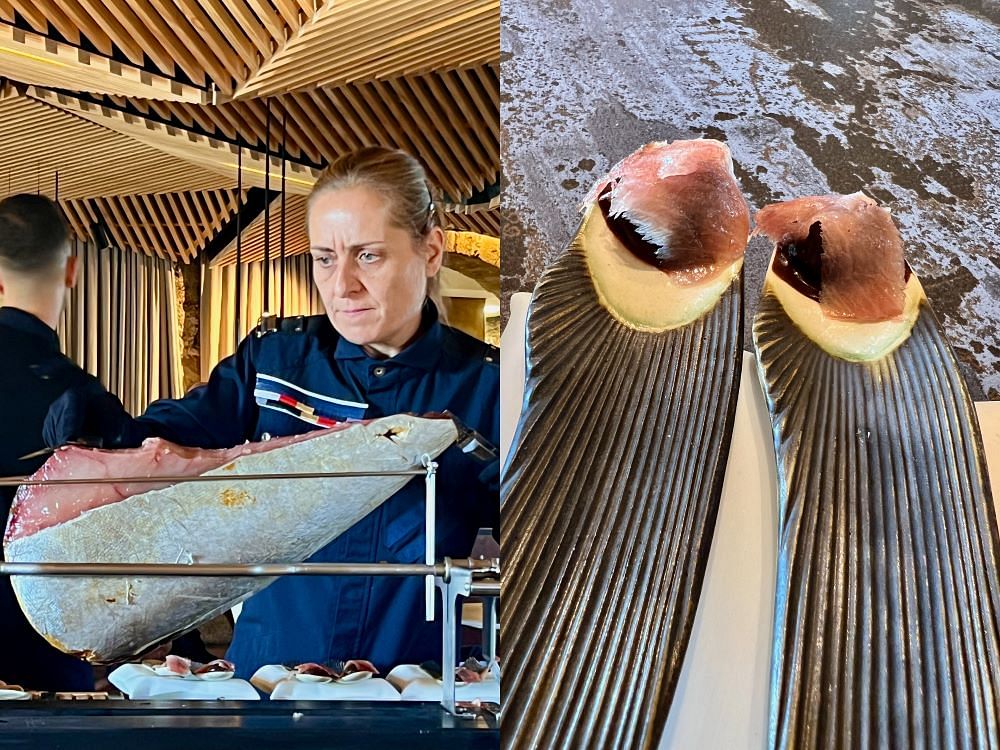
A rising variety of cooks world wide are experimenting with ageing fish, even serving it for dessert: On the ground-breaking, three-Michelin-starred Aponiente in southern Spain, Ángel León cuts aged Atlantic bluefin tuna stomach into the form of a ham, units it up on a stand normally used for carving legs of jamon iberico, and serves it in slices with chocolate marshmallow.
Improvements comparable to these are radically increasing our perceptions of how fish can be utilized, however ageing methods have, after all, been utilized in Japan for hundreds of years. It’s commonplace observe for many fillets of fish used for sushi to be aged for a number of days.
Historically, sushi ageing is extra akin, nonetheless, to moist ageing, with fish aged in chambers with gigantic blocks of ice and no followers. The fish was tightly wrapped up with little publicity to air. Precisely how every species and lower of fish is aged is as much as every chef.
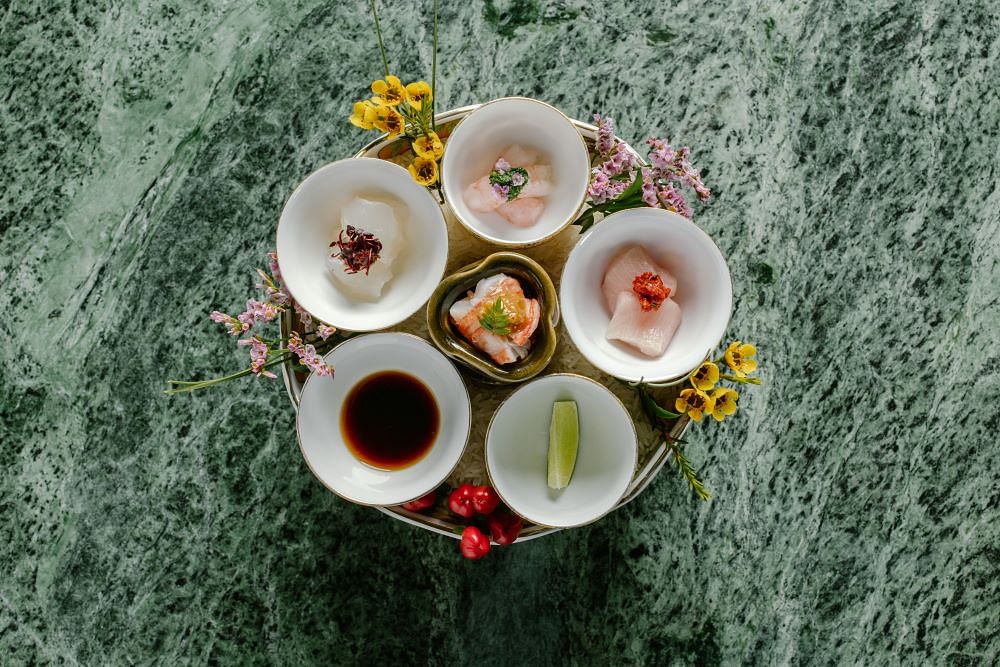
Agustin Balbi, govt chef and co-founder of one-Michelin-starred Spanish-Japanese restaurant Andō in Hong Kong, spent a number of years cooking at high kitchens in Japan, together with three-starred Nihonryori Ryugin, and integrates Japanese methods into his delicacies.
“Normally we predict that consuming fish recent out of the ocean is finest, however when you strive the fish when it’s simply caught, it has just about no flavour in any respect. It must relaxation to develop its finest flavour,” he says.
“Dry-ageing strips the fish of any extra moisture and breaks down the proteins, giving it a extra buttery texture. Moreover, the flavour molecules — glutamate and insulate — are launched through the ageing course of, including complexity of flavour. Definitely, being a tastier, juicier, and extra tender lower, dry-aged fish can also be simpler to prepare dinner.”
He ages fish for his uncooked seafood course paired with totally different dipping sauces and condiments, comparable to his wonderful samegarai (roughscale sole) served with black olives. He ages simply the fillets, locations them between two sheets of kombu seaweed, and leaves them in a particular fridge with a fan for 3 or 4 days till peak flavour and texture are achieved.
Dry-ageing strips the fish of any extra moisture and breaks down the proteins, giving it a extra buttery texture. Moreover, the flavour molecules — glutamate and insulate — are launched through the ageing course of, including complexity of flavour. Definitely, being a tastier, juicier, and extra tender lower, dry-aged fish can also be simpler to prepare dinner.
Complicated coating of flavours
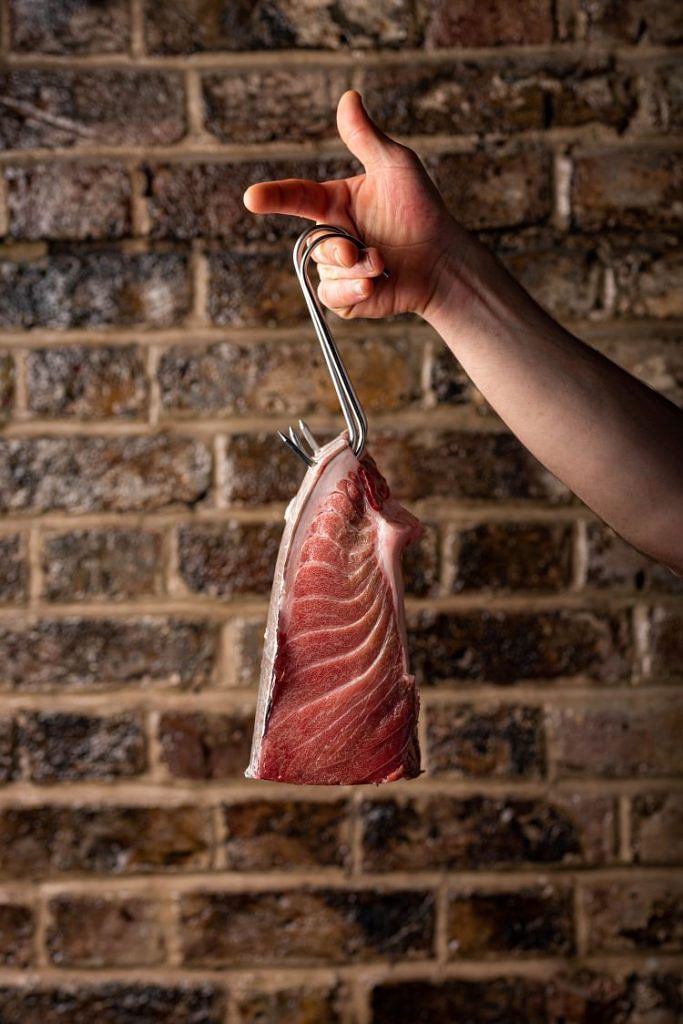
Leandro Carreira, of London’s modern The Sea, The Sea (which features a seafood bar in Chelsea and a 14-seater chef’s desk in Hackney), was impressed by Japanese fish ageing methods at one other London restaurant, Sushi Tetsu. Carreira, who spent three years on the distinctive Mugaritz in Spain and was govt chef at London’s Viajante by Nuno Mendes, has perfected his methods of dry-ageing fish over the past a number of years that he now provides to eating places throughout the British capital.
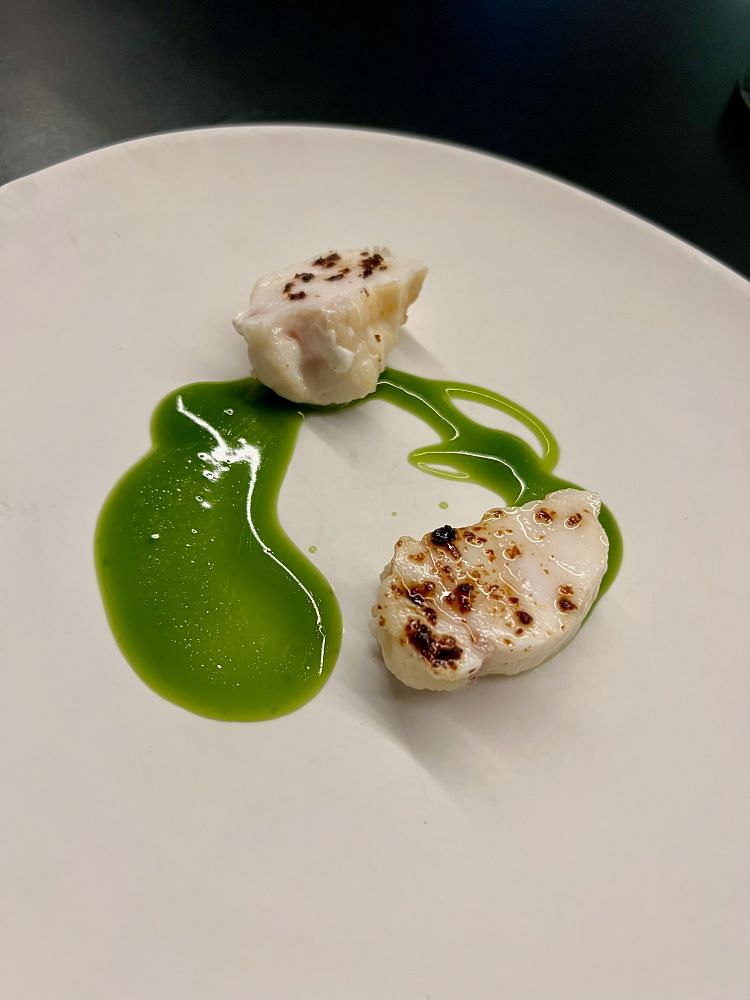
Lengthy strips of monkfish and entire turbot are strung up on hooks in entrance of a wall of pink Himalayan salt within the walk-in temperature-controlled dry-ageing cupboards on the entrance of the Hackney restaurant, whereas state-of-the-art shellfish filtration pods gurgle to 1 facet. Carreira is now experimenting with dry-ageing seafood, together with squid, scallop, and cuttlefish.
“We’ve left our line-caught squid hanging for six days, typically encased in beeswax. The beeswax doesn’t make the squid acquire flavour, however possibly as a result of it’s coated and guarded, it has developed its personal flavour,” he says. “Subsequent to a recent piece of squid, you wouldn’t consider it; it’s exceptional, with deep umami flavours.”
Fishing round for options
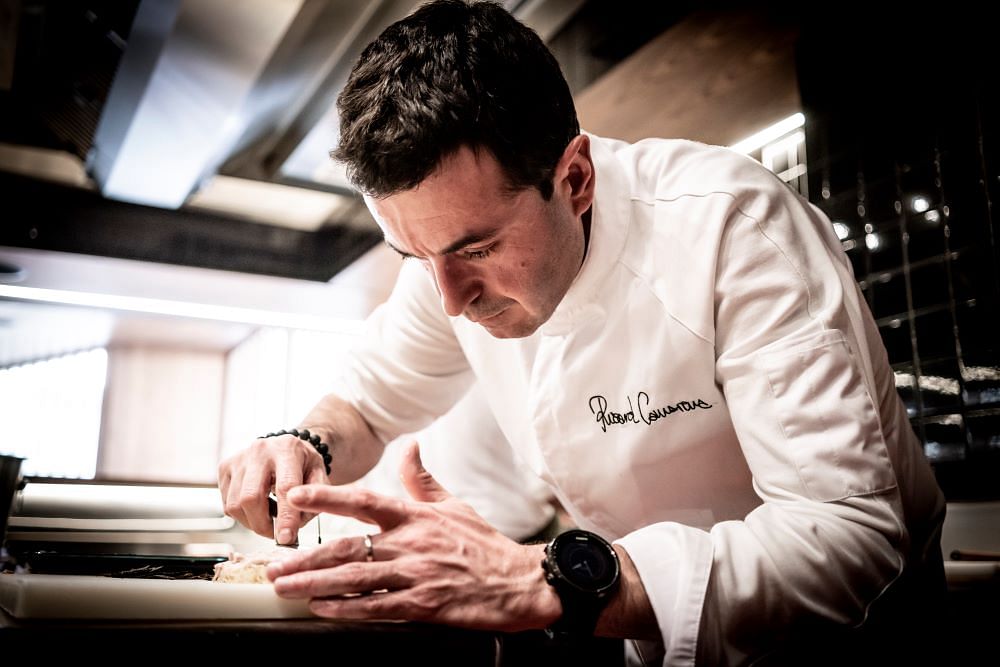
Dry-ageing fish in varied coatings is one thing Ricard Camarena has additionally been perfecting at his two-Michelin-star and inexperienced star eponymous restaurant in Valencia, Spain.
The method started with what he describes because the “syllogism between nori seaweed, tuna, and carob”. The scent of carob, when he broke the bean, at all times reminded him of nori, whereas the seaweed and tuna are a traditional pairing.
He tried cooking tuna in carob bean juice nevertheless it was a “catastrophe”; he powdered carob bean in a macerator however couldn’t get the ratio proper. He then moved on to a puree of carob with yoghurt whey and coated varied cuts of tuna on this puree, leaving them for as much as two months in a dry-ageing fridge.
After a yr of serving morsels of tuna this fashion, he substituted steamed rice for the yoghurt whey, utilizing koji (yeast starter) spores to successfully create an acidic amazake (candy drink made out of fermented rice). However he quickly realised he might use the leftover bread from his restaurant to exchange the steamed rice.
“We by no means throw something away and had been already making two totally different drinks from leftover bread that we’d serve in our no-alcohol pairings,” he says. “We made lots of drinks, even placing them in barriques to promote, however we had greater than individuals wished. So I believed to make use of the bread, inoculated with aspergillus, for ageing tuna. We’re very pleased with it this fashion.”
He makes use of the identical course of for varied cuts of the tuna, dry-ageing it for a formidable 4 to 6 months, relying on the load and thickness of every lower: “The method is identical; simply the complexity and depth of fragrant flavour are totally different,” he says.
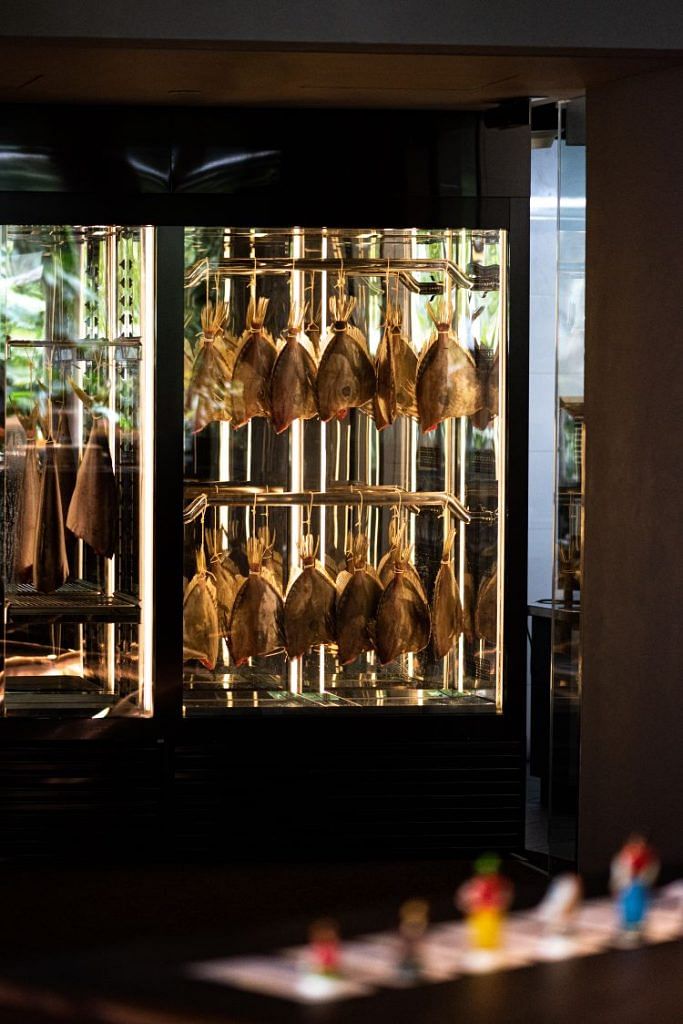
For Michael Wilson, chef-patron of Marguerite in Singapore, he was compelled to dry-age fish because of the lack of ability to get fish delivered from Europe on daily basis.
“We had been searching for a means we might retailer fish that wouldn’t degrade it, for instance, by freezing, and a solution to forestall us from processing the product too far prematurely,” he says. “Dry-ageing was the reply, and never solely did it clear up these points, it made the fish higher.”
Wilson has been dry-ageing every thing from ora king salmon and Patagonian toothfish to John dory and scorpion fish since Marguerite first opened in November 2021.
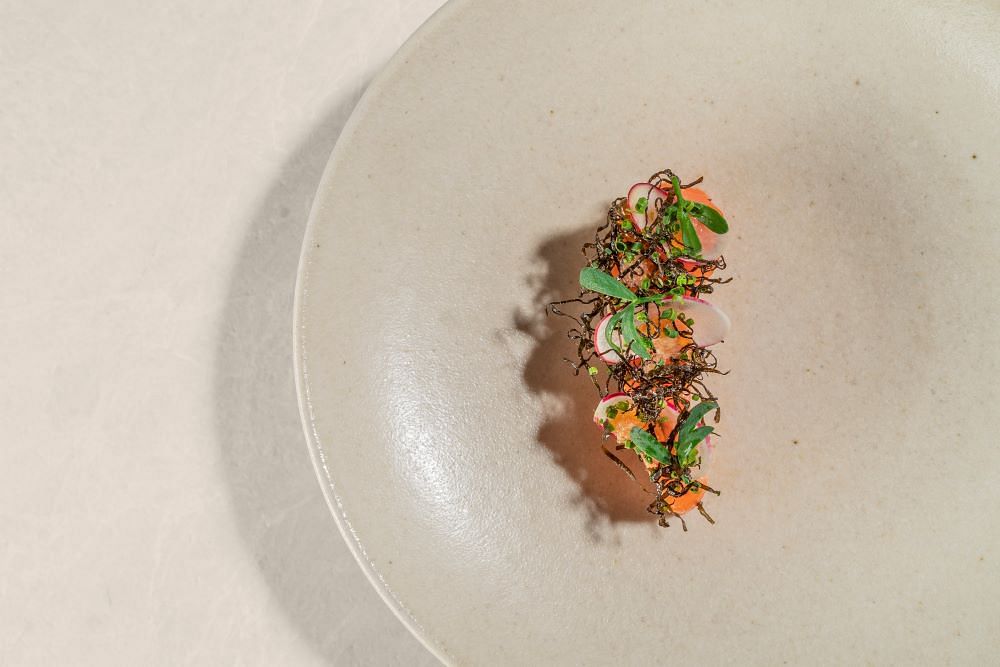
When the fish is available in, he removes the scales with a knife or a scaler, opens the intestine cavity and removes the contents. If the fish is aged with the top on, he removes the gills, in any other case, the top is usually eliminated. He then makes use of a toothbrush and recent, chilly water to softly scrub the within freed from any blood. He then pats the fish dry and hangs it within the cupboard throughout the restaurant, which is about at one to 3 levels celsius and at 70 to 80 per cent humidity, from two days to a month, relying on the species.
For Wilson, the success of dry-ageing comes all the way down to the standard of the product and exact method: “You’ve obtained to first begin with getting the freshest high quality fish in good situation. Then it’s good to put together the fish appropriately,” he says. As extra cooks world wide experiment with their very own approaches to ageing fish, boosting flavour, and decreasing waste, culinary prospects proceed to broaden.
This text was initially revealed in The Peak.
Supply: Her World
